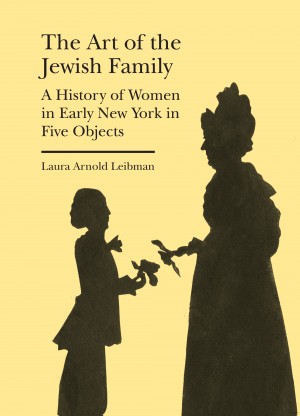The premise of an extra night of Hanukkah is instantly appealing to children; who wouldn’t want to extend this joyous historical holiday in the midst of winter? Erica Perl and Shahar Kober’s tale of an additional Hanukkah night is not a gesture towards the material satisfaction of extra presents or more comfort food, but a meaningful tribute to family and community. With thoughtful words which acknowledge children’s needs to cope with disappointment, and with cheerfully vibrant pictures, The Ninth Night of Hanukkah offers a new perspective on the festival. Hanukkah retains its distinctly Jewish meaning, while becoming an opportunity to include others.
Max and Rachel’s family has just moved into a new apartment and many of their most important Hanukkah items seem to be lost. While Mom and Dad are calm and reassuring, not the type of parents to panic at a missing latke pan or even a menorah, the children are worried. As everyone enjoys a pizza while sitting on the floor, Max and Rachel accept their mother’s prediction that this situation is only temporary, but the expressions on their faces reflect concern. Fortunately, a positive attitude is part of their DNA; as their parents both offer helpful suggestions and take the children’s input seriously, Max and Rachel display their resourceful natures. A homemade menorah is a good start, but their decision to involve their new neighbors is even better. Perl introduces a warmly accepting multicultural and multigenerational cast of characters in a natural and unobtrusive way. These are kind and helpful people who show genuine concern for their new neighbors’ compromised celebration. Mrs. Mendez, Dr. Lee, Mr. Patel, and the Watson twins’ mom all come up with pretty good substitutes for everything from jelly donuts to candles. Even the red-bearded hipster superintendent makes a contribution. The children’s reactions comprise a realistic range, from mild disappointment to enthusiasm.
Kober designs people with simple but expressive features. Each scene is carefully composed, with key elements posed against a quietly minimalist background. When Max and Rachel’s mother dives head-first into a huge carton looking for candles, only the lower half of her body is visible, her red shoes drawing attention to a ballet-like pose. Much of the background is empty space, with a pair of scissors in one corner and an umbrella leaning against a box in another. The umbrella will reappear later as part of a particularly inventive dreidel. As Mr. Patel hands Rachel a bag of chocolate chips, his other arm cradles an infant whose tiny hand rests against her father’s shirt, drawing attention to the parent-child relationships which are central to the story. Touches of color and finely drawn details summon the reader’s attention in a palette of earth tones: the baby’s pink pacifier, a red flower in a pot, a carefully folded newspaper turned into gift wrap.
Perl’s personal “Author’s Note” explains the background of Hanukkah, as well as the origins of her book in her own family’s traditions. She even thoughtfully includes a gesture towards Jewish diversity by acknowledging that the now standard shamash, and the Yiddish pronunciation, shammes, are variants of the same word. In Perl’s story, the “helper” candle, bringing light to the others in the menorah, is the core of Hanukkah.
Emily Schneider writes about literature, feminism, and culture for Tablet, The Forward, The Horn Book, and other publications, and writes about children’s books on her blog. She has a Ph.D. in Romance Languages and Literatures.




